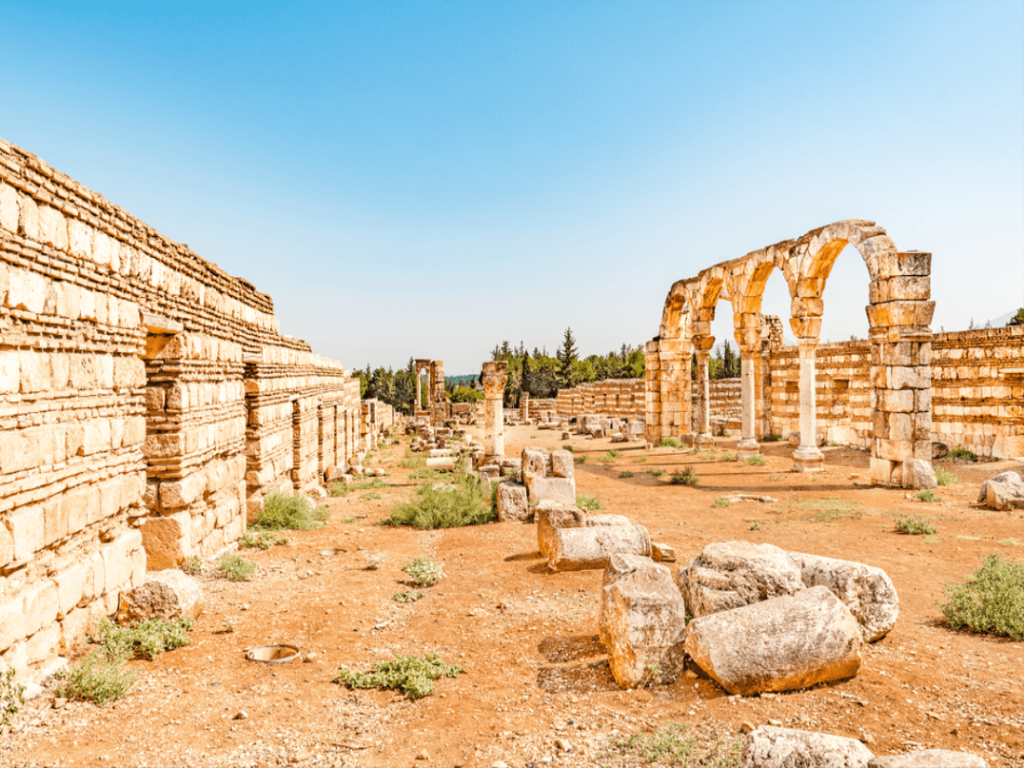Looking for a unique travel experience in Lebanon? Tucked away in the serene embrace of the Beqaa Valley, Anjar, Lebanon offers visitors an unforgettable journey. This town is more than just a ruin; it’s a living story that blends the rich history of Anjar Lebanon with the resilient spirit of its modern Armenian community. In this article, we’ll explore what makes Anjar a captivating destination that will exceed your expectations.
Anjar Lebanon: Exploring the Umayyad Ruins
Anjar Lebanon is a historical city nestled in the fertile Beqaa Valley. It’s famous for its magnificent Umayyad ruins, which date back to the eighth century AD. These ruins are a unique site that represents a short yet important period in the region’s history.
Umayyad History: Anjar’s Unique Planned City
The city of Anjar was founded in the early 8th century by the Umayyad Caliph Al-Walid I. It wasn’t just a regular town but a crucial commercial hub at the crossroads of ancient trade routes, earning it the title of the only “palace-city” of the Umayyads in Lebanon.
What makes the history of Anjar Lebanon so fascinating is its meticulous urban planning, which reflects a blend of Roman and Byzantine architectural influences. The city was built in a fortified rectangular shape, enclosed by strong walls and defended by 42 towers. Inside, straight streets intersect to form four quadrants, each containing important buildings. You can still imagine the city’s grandeur by walking through its well-preserved ruins:
- The Caliph’s Palaces: The site features the remains of two grand palaces; the larger one was the Caliph’s residence.
- The Central Mosque: Located at the city’s heart, the mosque stands as a testament to the community’s spiritual life.
- Public Baths: Built in the traditional Roman style, these baths highlight the advanced social life of the time.
- The Colonnaded Street: Walk along the main street and admire the impressive columns that once lined this magnificent thoroughfare.
Anjar Today: A Story of Resilience and Community
After centuries of being forgotten, the name Anjar regained its shine thanks to an incredible story of human resilience. In 1939, thousands of Armenian refugees from Musa Dagh (Mount Moses) in Turkey settled here. They transformed the barren, swampy land into a beautiful, green town with a strong, organized infrastructure. The vibrant Armenian community of Anjar is an integral part of its identity, a living testament to their hard work and cultural preservation.
Eco-Tourism: Anjar’s Natural Charm
Beyond its historical ruins, Anjar also offers unique eco-tourism experiences:
- Kfar Zabad Nature Reserve: This sanctuary is a paradise for birdwatchers, as hundreds of migratory bird species pass through here. Guided tours for birdwatching and hiking are available.
- The Water Trail: Explore the scenic “Water Trail” that leads you past old watermills and small streams, offering a peaceful escape into nature.
A Taste of Anjar: Rich Armenian Cuisine
A trip to Anjar isn’t complete without sampling its famous Armenian cuisine. The local food is rich with traditional flavors. Here are a few dishes we highly recommend you try:
- Manti: Tiny dumplings filled with seasoned meat, baked, and served with a garlic-yogurt sauce.
- Harissa: A thick porridge of roasted wheat and meat, a traditional dish for special occasions.
- Armenian Potatoes: Crispy fried potatoes seasoned with a unique spice blend, perfect as a side dish.
- Lavash Bread: A thin, traditional flatbread that is part of UNESCO’s Intangible Cultural Heritage list.
Conclusion
Anjar is a historical gem in Lebanon that is worth visiting and discovering. It is a unique window into the Umayyad rule and their rich heritage. We hope this article has inspired you to visit the Anjar ruins and delve deeper into the history and culture of the region, in addition to developing your Arabic language skills. Enjoy your educational and cultural journey!
If you wish to learn more about the Arabic language, download our Arabic learning app.



